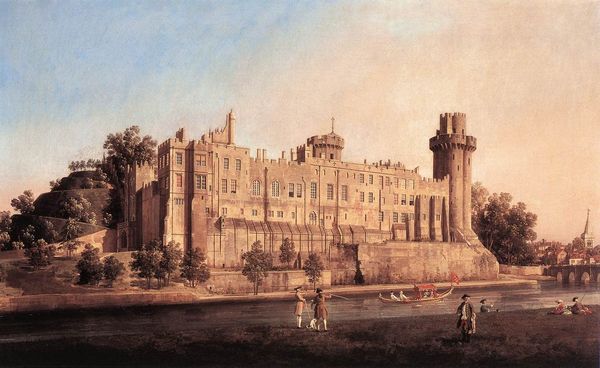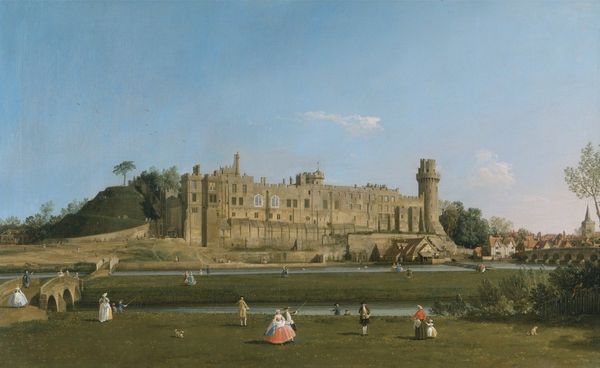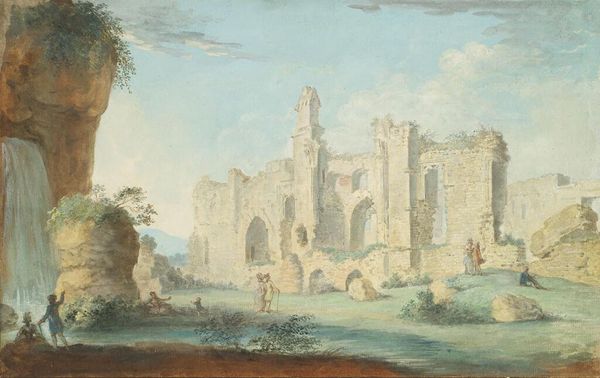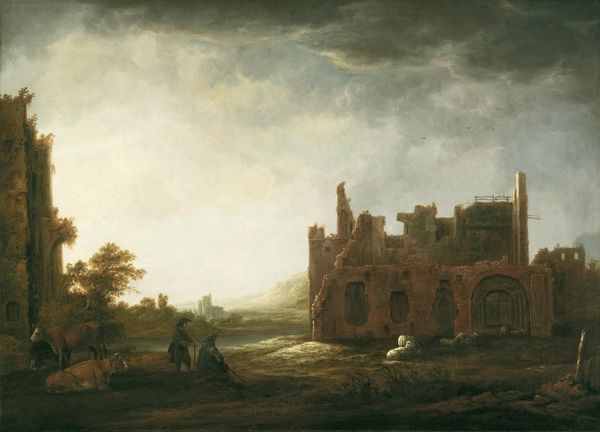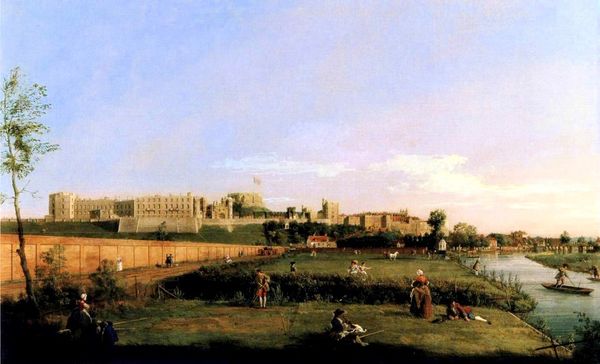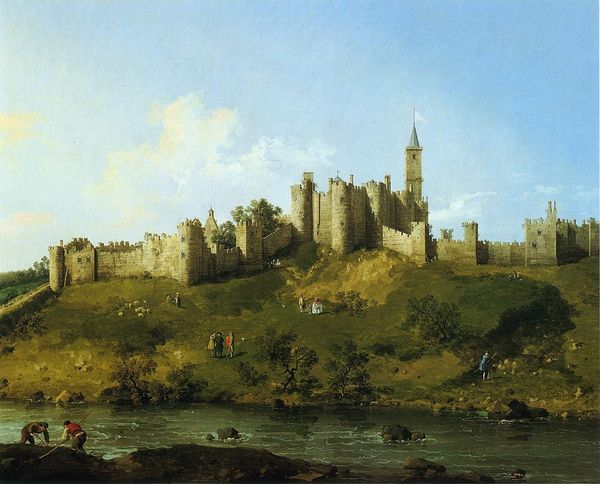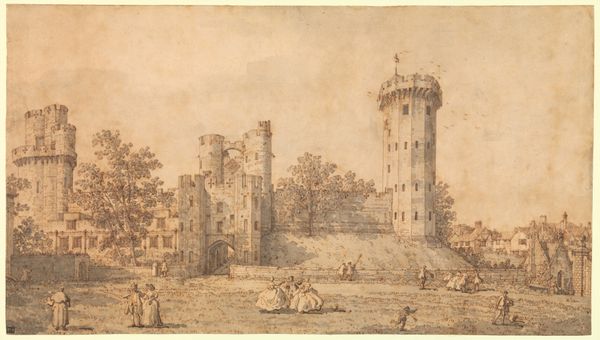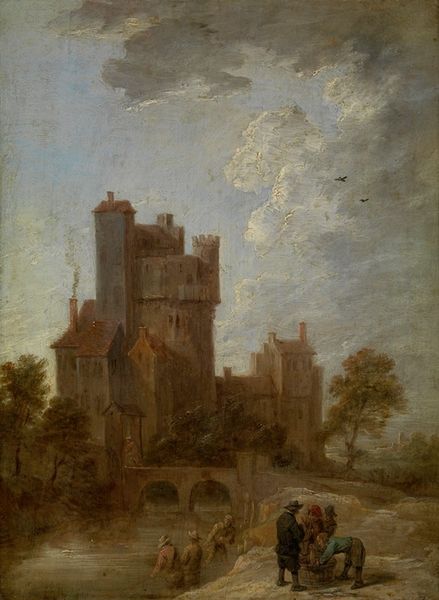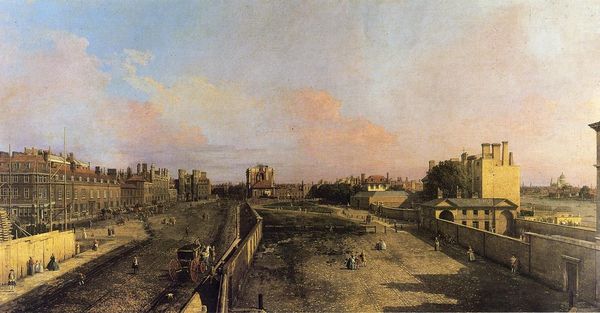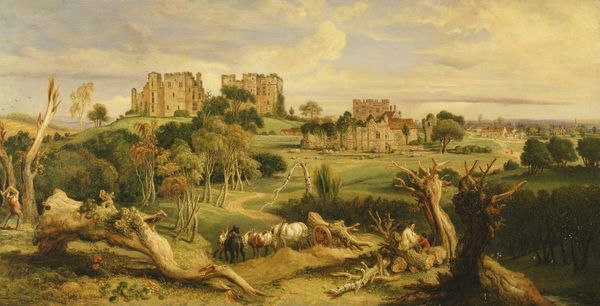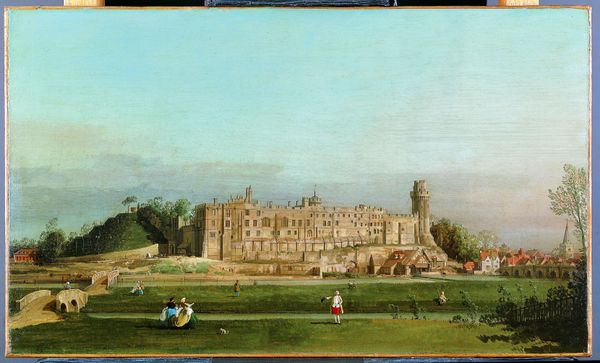
architecture
#
public art
#
abandoned
#
building site documentary shot
#
possibly oil pastel
#
oil painting
#
derelict
#
underpainting
#
urban art
#
arch
#
public art photography
#
watercolor
#
architecture
#
building
Dimensions: 73 x 122 cm
Copyright: Public domain
Canaletto made this painting of Warwick Castle with oil on canvas. Of course, oil paint is the perfect medium for capturing the gradations of light across the castle’s stone facade. But it also does something else, a little less obvious: it disguises labor. We might think about how each individual stone was quarried and laid to create the castle in the first place. Then consider how that process is reflected in Canaletto’s practice: each dab of pigment, blended painstakingly to create a photorealistic effect. This technique effectively obscures how long it would have taken to prepare the surface, mix the paints, and then build up the image on the canvas. Though the painting is small, it represents both the literal weight of Warwick Castle and the invisible weight of the labor and material that went into its creation, both in the 14th century and the 18th. By considering these processes, we see that even a seemingly straightforward landscape painting can have a deep connection to social history.
Comments
No comments
Be the first to comment and join the conversation on the ultimate creative platform.
